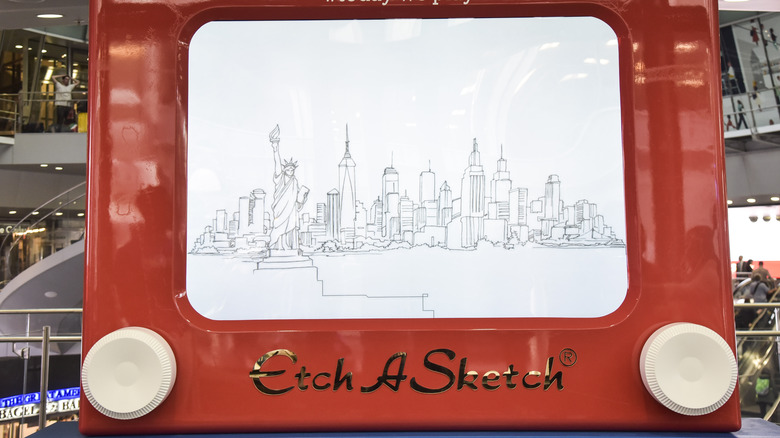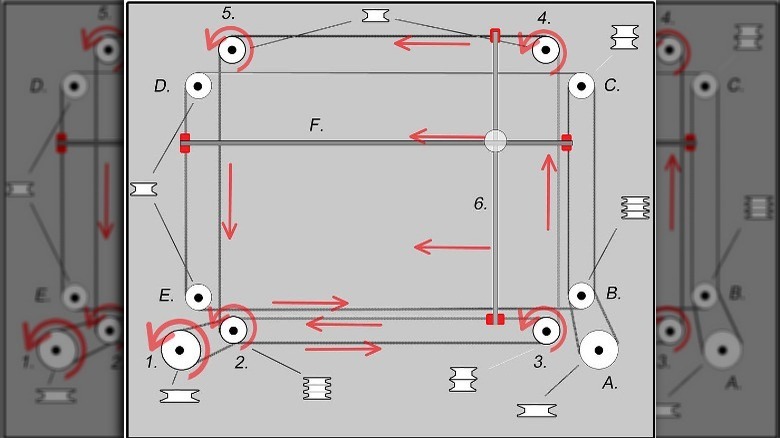This Is How An Etch A Sketch Works
Nearly every kid in America knows the Etch A Sketch. Although it was invented in the 1950s, the toy's ingenious design has given it a lasting cultural impact. Even today, the Etch A Sketch is a favorite last-minute Christmas gift bought by aunts and uncles across the U.S. But what kid could complain? It's a simple toy with infinite possibilities; just turn the knobs and draw any image you want on the silver screen.
As Mental Floss reports, the Etch A Sketch was invented by a French electrician, André Cassagnes, in the late 1950s. Cassagnes had the idea for the toy when he learned that an electric charge can cause aluminum powder to stick to a piece of glass. Cassagnes realized that this simple fact could be put to creative use, and he quickly built a prototype of his now-famous toy in his basement workshop. With the help of an early investor, Cassagnes' invention was put on display at a number of toy fairs across Europe, but no company seemed impressed enough to acquire the device. That changed when the Ohio Toy Company saw the toy on display at the 1959 International Toy Fair in Nuremberg.
At first glance, Ohio Toy Company executives may not have understood how Cassagnes' toy worked. But they didn't need to understand it to realize that it could make them a lot of money. In 1960, the company launched the toy in the United States, branding it the "Etch A Sketch."
As you turn the toy's knobs, you carve your drawing into aluminum powder
The silvery-grey color of an Etch A Sketch comes from metallic aluminum powder; the inside surface of the screen is absolutely coated in the stuff. When you draw a line on an Etch A Sketch, you might think that you're adding a black substance to that grey background. In reality, per How Stuff Works, you're actually scraping the grey aluminum powder away, exposing the black interior of the toy.
You do that via the two white knobs on the front of the toy. As Mental Floss writes, the Etch A Sketch's knobs are attached to two rods inside the device — one horizontal, and one vertical. Turn one knob, and the vertical rod moves left and right; turn the other, and the horizontal rod moves up and down. (This motion happens via a complex system of pulleys, as depicted in the diagram above.) The pointer that displaces the Etch A Sketch's aluminum powder sticks up from where these two rods intersect. As you turn the knobs, you move around the pointer, "etching" your drawing into the powder as it gets pushed aside.
Finally, when you're ready to wipe your Etch a Sketch clean, you shake it. That causes the aluminum powder to spread out, evenly coating the inside surface of the screen and filling in the lines you carved. This resetting is aided by some tiny plastic beads mixed in with the aluminum powder; the beads smooth out the powder as it re-coats the screen.

